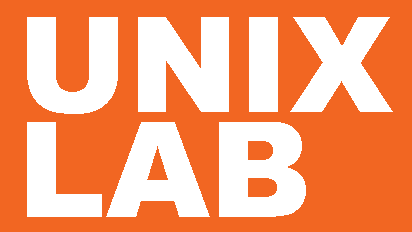Aspen Plus: Physical Properties for Process Engineers
Course ID : EAP201
Duration In-class (в days) : 2 days
Duration Online : 2 days
Сurriculum : in-class, Virtual Instructor-Led Training - ONLINE
Price : $1 290
Overview
Develop the skills and techniques required to specify and use thermodynamic property models in your steady-state and dynamic simulations by gaining a better understanding of the Aspen Plus physical properties system. Build property analysis plots, review various property parameters, and learn about different thermodynamic property models commonly used. Recognize key applications of different property methods via examples aimed at achieving sustainabilitygoals.
Audience for this course
Individuals who want to strengthen modeling skills by learning how to use the physical property features of Aspen Plus and Aspen Properties.
Objective
Course Benefits
- Learn how to select physical property methods appropriate for your process
- Modify physical properties and supply data to improve the accuracy of an existing model
- Understand how to validate physical properties
- Gain practical knowledge in estimating and regressing missing parameters
- Learn how to use the physical property features of Aspen Plus and Aspen Properties
- Identify key examples of different property methods in areas such as End-to-End Carbon Capture, Recycling, and Hydrogen Production
Prerequisites for this course
Some prior experience in modeling using Aspen Plus
EAP101 Introduction to Process Modeling using Aspen Plus is helpful, but not required
Outcomes
- Learn how to select physical property methods appropriate for your process
- Modify physical properties and supply data to improve the accuracy of an existing model
- Understand how to validate physical properties
- Gain practical knowledge in estimating and regressing missing parameters
- Learn how to use the physical property features of Aspen Plus and Aspen Properties
Outline
-
Introduction to Properties for Flowsheet Simulation
- Identify and explain the need for accurate physical properties by studying a variety of examples
- Introduce basic concepts:
- Thermodynamic properties (density, enthalpy)
- Transport properties (viscosity)
- Phases (vapor, liquid, liquid-liquid)
- Demonstrate how to start and navigate in Aspen Properties user interface
-
Ideal Gas and Ideal Liquid
- Explain and review the IDEAL property method
- Ideal Gas Law for the vapor phase
- Calculation of the vapor phase enthalpy
- Calculation of the liquid phase properties
- Introduce the concept of routes and models
- Workshop: Analyze pure component properties using the Property Analysis tool
-
Physical Property Parameters
- Explain and review physical property parameters and databanks
- Workshop: Retrieve and display parameters for the IDEAL model
-
Property Sets and Property Analysis
- Show how to use interactive property analysis
- Explain how to create and use property sets
- Show how to create and use property analysis tables
- Workshop: Analyze properties of a mixture using the Generic Property Analysis
-
Activity Coefficient Models
- Explain how activity coefficient models may be used to model large deviations from ideal mixture in liquid phase
- Workshop: Use mixture property interactive analysis tools and display binary and ternary equilibrium diagrams
-
UNIFAC
- Explain the UNIFAC method
- Basis
- Limitations and applicability
- Workshop: Demonstrate how to create user defined UNIFAC groups
-
Henrys Law
- Explain how to use Henrys law with activity coefficient models
- Workshop: Analyze solubility for supercritical components (optional)
-
Equation of State
- Discuss Issues in Modeling Non-Ideal Systems Using Equations of State, Corresponding States Principle, Mixing Rules, and Alpha function
- Discuss special equation of state for water/steam or specific mixtures
- Workshop: Show how an equation of state can be used to model the expansion of a gas mixture through a valve
-
Advanced Equation of State
- Identify how some equation of states can be extended to improve predictions for strongly non-ideal mixtures (e.g., PSRK predictive Soave-Redlich-Kwong EOS and VTPR volume translated Peng-Robinson)
- Explain how vapor phase association models may be used with activity coefficient models (e.g., NRTL-HOC)
- Discuss PC-SAFT EOS
- Discuss CPA EOS
- Workshop: Use PC-SAFT EOS for VLE and LLE calculations
-
Selection of Physical Property Methods
- Explain how to select the thermodynamic model based on the type of components and conditions
- Review the different levels at which property methods can be specified in a simulation
- Workshop: Demonstrate how to select the appropriate property method for different systems
-
Electrolyte Property Methods
- Review the ELECNRTL activity coefficient model for electrolyte systems
- Explain how to set up properties for a simulation using electrolytes
- Workshop: Evaluate liquid-vapor equilibrium for an electrolyte mixture
-
Data Regression
- Explain the basics of Data Regression in Aspen Plus and how to setup a Data Regression Run
- Workshop: Regress Pure Component Data
-
Data Regression of Mixture Data
- Explain how to perform Mixture or Phase Equilibrium Data Regression and how to interpret regression results
- Workshop: Regress vapor-liquid, liquid-liquid and salt saturation experimental data
-
Solid-Fluid Equilibrium
- Explain how to perform solid-fluid equilibrium analysis
- Workshop: Model solid-liquid equilibrium
-
Property Constant Estimation
- Describe the purpose of the Property Estimation
- Explain the workflow to use the Property Estimation to define the molecular structure of components and specify the estimation methods
- Explain the methods available to estimate binary parameters
- Workshop: Estimate pure component parameters and binary interaction parameters
-
Customizing Property Methods
- Explain how to customize physical property methods
- >Workshop: Change various settings in property methods




